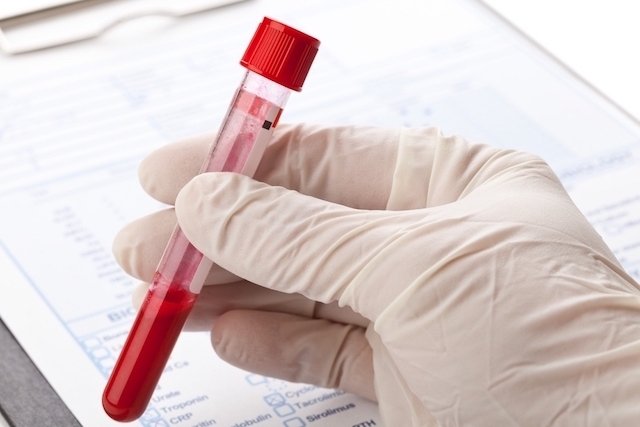The alanine aminotransferase test, also known as ALT or TGP, is a blood test that helps identify liver injuries and diseases due to the high presence of the enzyme alanine aminotransferase, also called glutamic pyruvic transaminase, in the blood, which is normally found between the 7 and 56 U/L of blood.
The pyruvic transaminase enzyme is present within liver cells and, therefore, when there is damage to this organ, caused by a virus or toxic substances, for example, it is common for the enzyme to be released into the bloodstream.
The TGP dosage is usually requested in conjunction with the TGO dosage, as this makes it possible to more accurately assess liver health. Find out more about TGO and TGP.

When to take the ALT exam
The alanine aminotransferase test is used to detect liver damage and, therefore, can be recommended for people who have:
- Fat in the liver or are overweight;
- Excessive tiredness;
- Loss of appetite;
- Nausea and vomiting;
- Belly swelling;
- Dark urine;
- Yellow skin and eyes.
However, ALT levels may already be high even when the patient does not present any symptoms, making it a great tool for diagnosing liver problems early.
Therefore, the ALT test can also be done when there is a history of exposure to the hepatitis virus, excessive use of alcoholic beverages or the presence of diabetes. Find out what other changes in the blood test mean.
Do you have questions about your exam results?
High TGP/ALT is when the levels of this enzyme are above 56 U/L. Depending on the concentration, it can be classified as high TGP and very high TGP:
- Very high ALT: 10 times higher than normal: it is normally a change caused by acute hepatitis caused by a virus or the use of some medications;
- Very high ALT: 100 times higher than normal: it is very common in users of drugs, alcohol or other substances that cause serious liver damage;
- Elevated ALT: 4 times higher than normal: It may be a sign of chronic hepatitis and, therefore, may indicate liver disease such as cirrhosis or cancer, for example.
Despite being a very specific marker for liver damage, this enzyme can also be found in muscles and the heart in smaller quantities, and an increase in the concentration of this enzyme in the blood can be seen after intense physical exercise, for example.
Therefore, to assess functioning and identify liver damage, the doctor may request the measurement of other enzymes, such as lactate dehydrogenase (LDH) and AST or TGO. Learn more about the AST exam.
What to do in case of high TGP
In cases of high TGP, it is important to consult a hepatologist to carry out a complete assessment and, if necessary, recommend appropriate treatment, including a healthy diet and the use of medication. Find out how high TGP is treated.
The doctor may also request other more specific tests, such as hepatitis tests or liver biopsy to confirm the diagnostic hypothesis.
What can be low TGP
Decreasing TGP levels alone is usually not relevant, especially when there are no signs or symptoms. However, in the presence of symptoms, low TGP may indicate vitamin B6 deficiency or a urinary tract infection.
Read too: Low TGP: what it means, symptoms (and how to treat it)
Furthermore, when a decrease in the TGO level is also observed, it may be indicative of azotemia, which is a situation characterized by the accumulation of urea and creatinine in the blood, or liver cancer, and it is important that more tests are carried out.
Bibliography
- SOOKOIAN, S.; PIROLA, C.J. Liver enzymes, metabolomics and genome-wide association studies: from systems biology to the personalized medicine. World J Gastroenterol. 21. 3; 711-25, 2015
- SUNG, P. S. A different detection method reveals a new role of alanine aminotransferase as an indicator of liver fibrosis. Korean J Intern Med. 35. 2; 295-297, 2020
- YIP, TC; et al. Alanine Aminotransferase Level: The Road to Normal in 2021. Hepatol Commun. 5. 11; 1807-1809, 2021
- LIU, Z.; et al. Alanine aminotransferase-old biomarker and new concept: a review. Int J Med Sci. 11. 9; 925-35, 2014

Sign up for our newsletter and stay up to date with exclusive news
that can transform your routine!
Warning: Undefined array key "title" in /home/storelat/public_html/wp-content/plugins/link-whisper-premium/templates/frontend/related-posts.php on line 12
Warning: Undefined array key "title_tag" in /home/storelat/public_html/wp-content/plugins/link-whisper-premium/templates/frontend/related-posts.php on line 13




